UVA’s Kluge-Ruhe Aboriginal Art Collection asked students to create couture garments featuring beautiful indigenous Australian textiles. The results are runway-ready and coming to the Charlottesville stage in March.
Saturday, March 19, 2016 | 7:00PM | The Jefferson Theater
$10 – $12 | VIP: $75 | 1 FREE Ticket for UVA Students
Get Your Tickets Now!
In March, Australian Aboriginal culture will take center stage during a Charlottesville runway show featuring textiles made by indigenous artists and displayed in couture clothing designed by University of Virginia students.
The project, called “Culture Couture,” began when Lauren Maupin, education and program coordinator at UVA’s Kluge-Ruhe Aboriginal Art Collection, attended a fashion show at the Cairns Indigenous Art Fair during a 2014 summer fellowship in Australia.
“The garments and textiles were stunning,” Maupin said.
Kluge-Ruhe purchased several textiles and Maupin, eager to involve students, launched a January 2015 design contest with Marcy Linton, an associate professor of costume technology in UVA’s Department of Drama. Maupin and Linton selected promising sketches and, last fall, Linton led a class of seven students in bringing those sketches to life.
Along with student designers, the project includes 40 students helping with marketing, music, modeling and other tasks.
“Since there is no formal fashion program at UVA, this project reached students interested in fashion and gave them another way to learn about it,” Maupin said. “Now they can see their work come to fruition on the runway.”
UVA Today joined class sessions to document the students’ progress ahead of the March 19 runway show, to be held at the Jefferson Theater.
Alongside student garments, it will feature clothing and jewelry created by indigenous designers. Guests can enjoy food catered by C&O Restaurant, shop for accessories and attend an after party. Tickets are available through the UVA Box Office, and are redeemable with Arts Dollars.
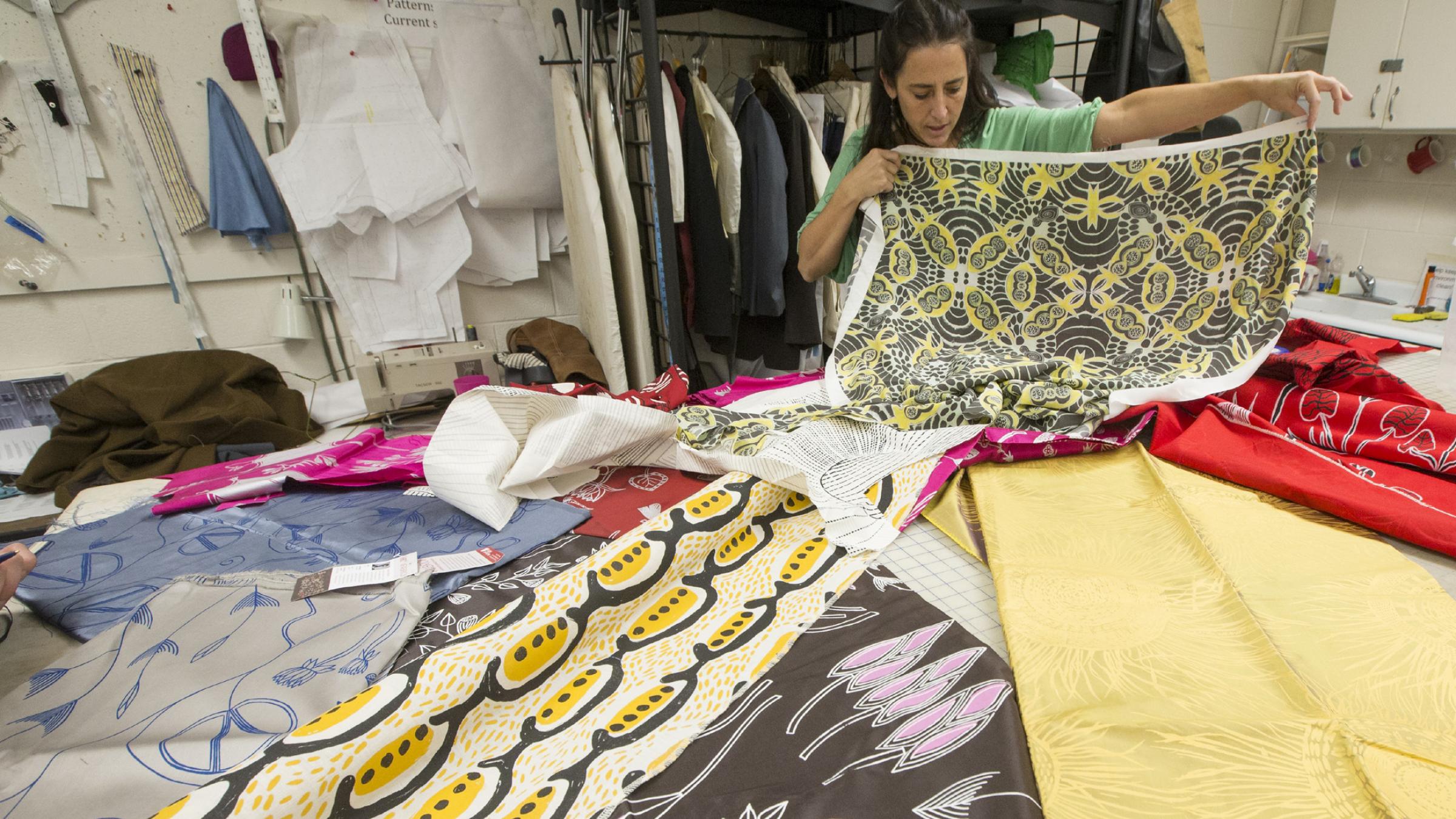
Linton, pictured here holding fabric by Racy Oui-Pitt from the Erub Erwer Meta arts center, asked students to design clothing that showcased the fabrics’ unique patterns, emphasizing that “what the students are working on is an extension of what is already art.” Students’ designs limited elaborate seams that would disrupt the patterns, and instead focused on keeping the pattern intact and showing it off.
“Students’ purpose as designers was, first and foremost, to showcase the textile’s design, and secondly, to create a design that they felt was beautiful, couture and expressive,” Maupin said.
During the class, students visited the Kluge-Ruhe Collection and held video calls with some of the artists to learn more about indigenous Australian culture.
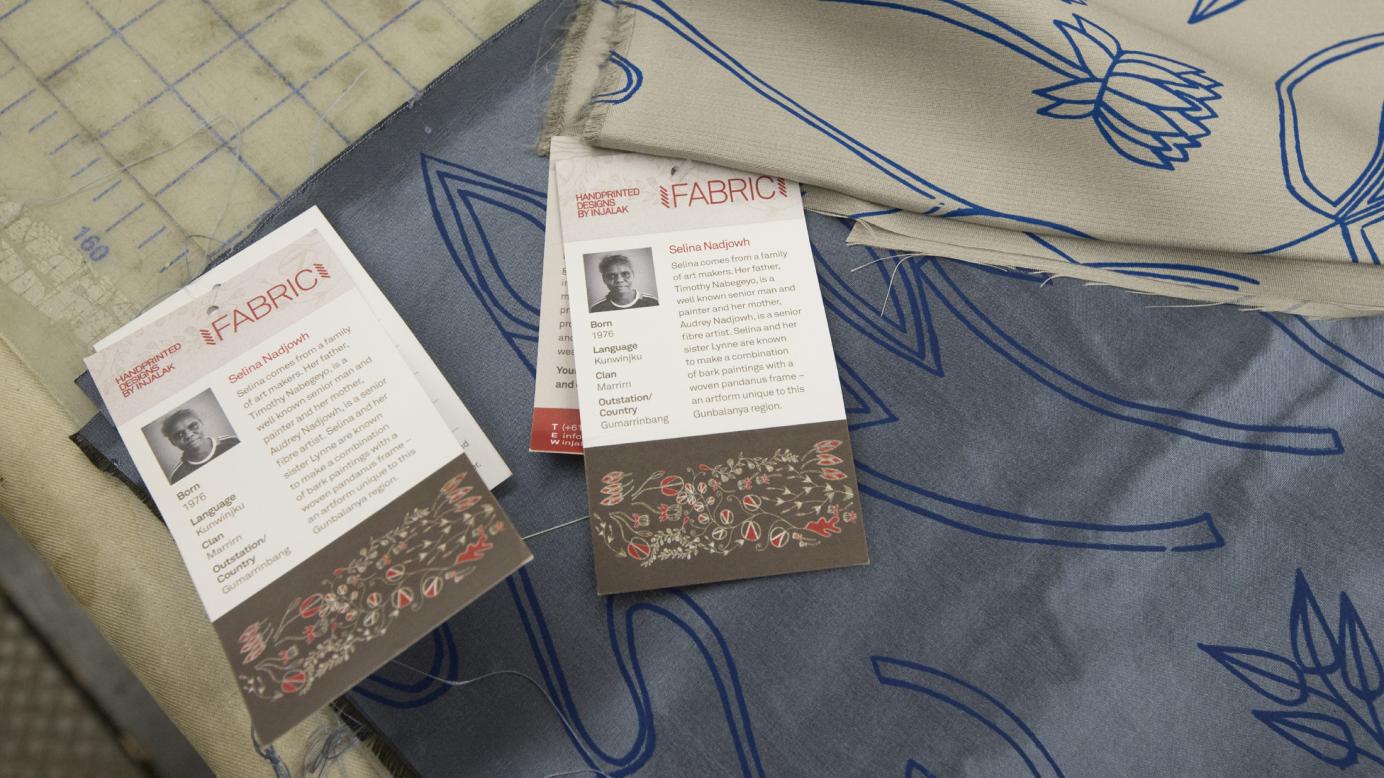
Some fabrics came with biographies of the artist who hand-printed it, such as these by Selina Nadjowh of Injalak Arts and Crafts. Artists hailed from four northern Australia arts centers: Babbarra Women’s Centre, Injalak Arts and Crafts, Erub Erwer Meta and Merrepen Arts. Each is a community hub for some of Australia’s most remote indigenous populations, often providing services like meals, medication distribution or job training. In this case, artists were learning how to create and sell screen-printed fabrics using traditional patterns from their culture.
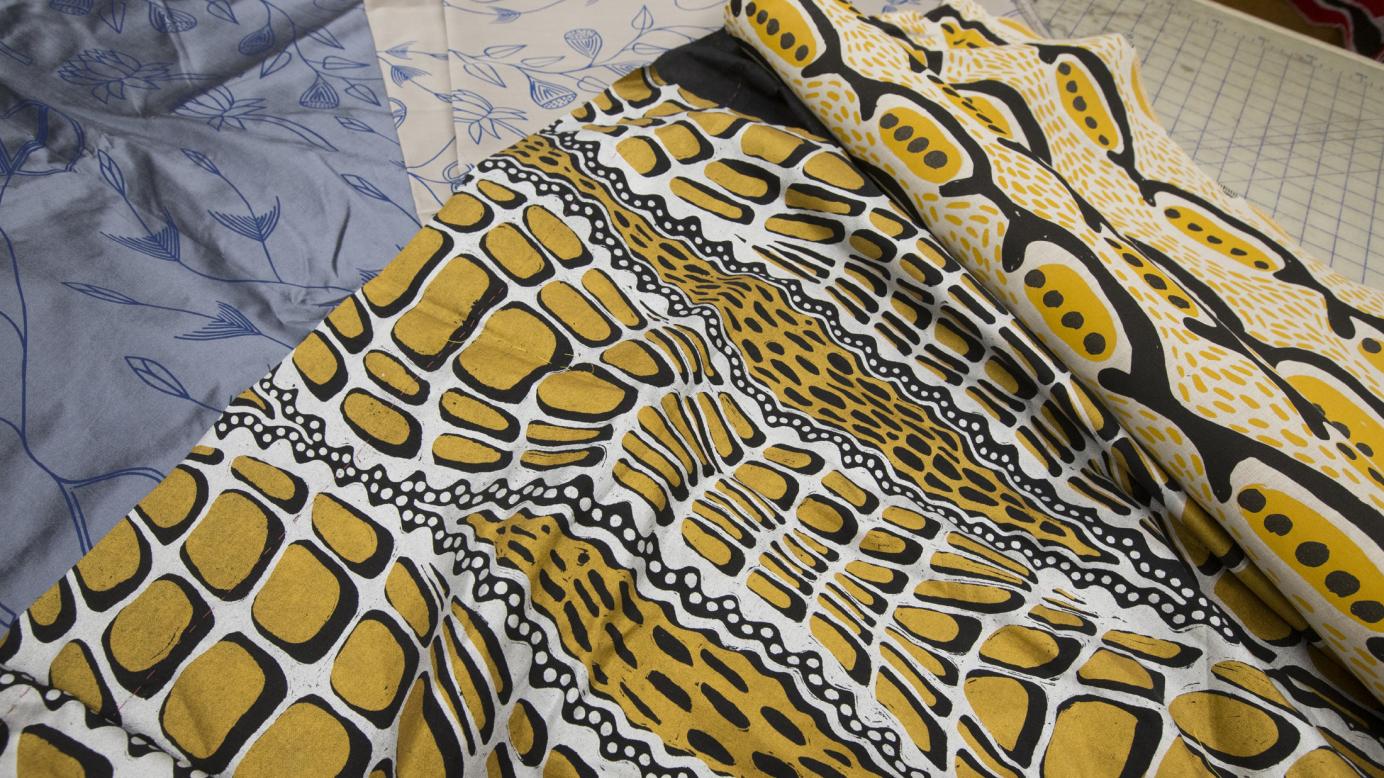
Many of the fabrics reference animal and plant life found near the artist’s home village such as the crocodile skin pattern by Aaron McTaggart shown here. Australian saltwater crocodiles – the largest reptile in the world – are common across northern Australia. Other patterns highlight the aquatic life and fishing traditions of coastal communities or the round mats woven from pandanus palm.
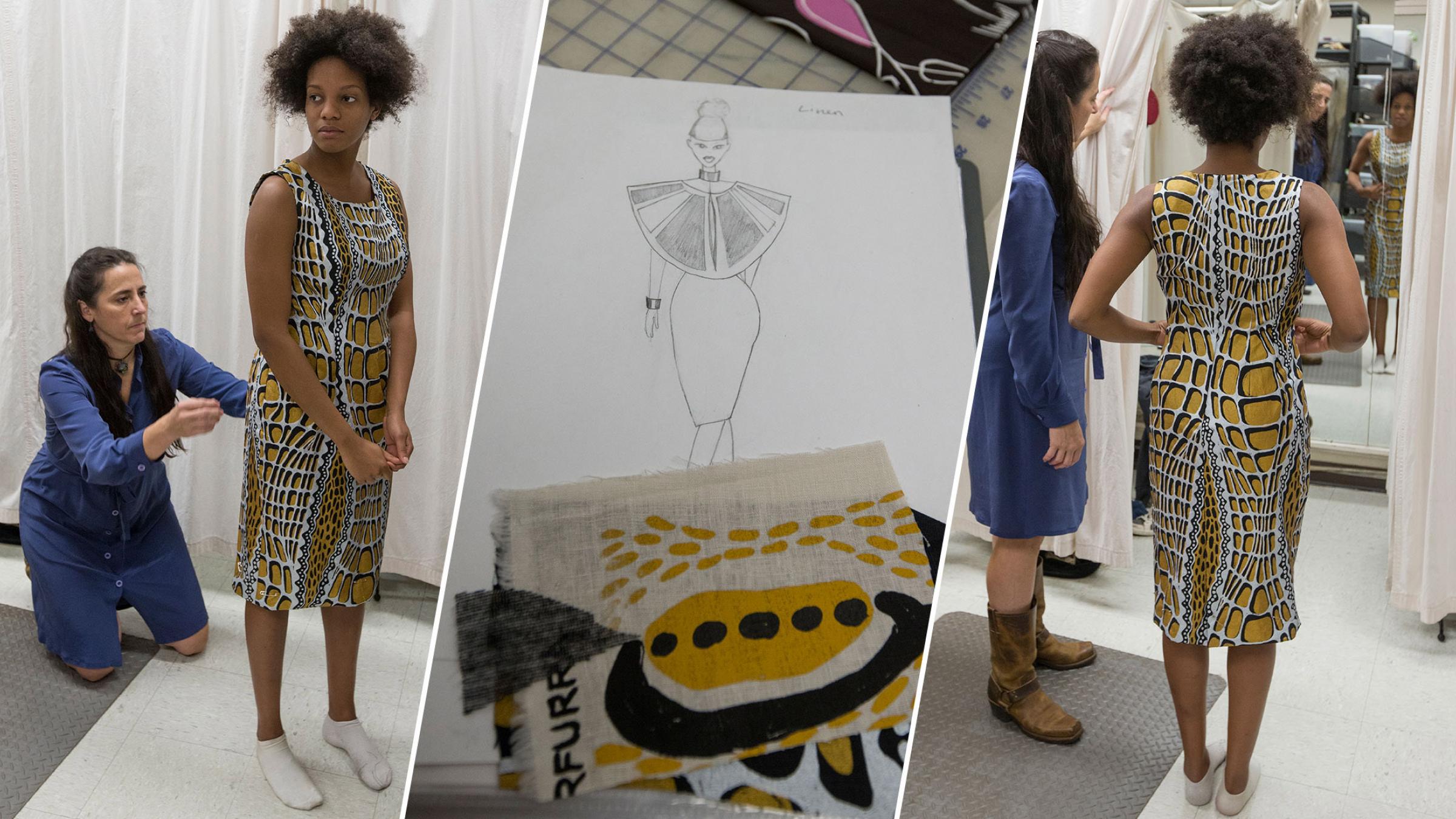
Third-year student Ismaelia Dejoie, pictured here wearing the dress she created, designed a caplet and dress combination that highlights the subtly curving geometry and striking pattern of the crocodile print by McTaggart, of Merrepen Arts. Dejoie will model her design during the March runway show.
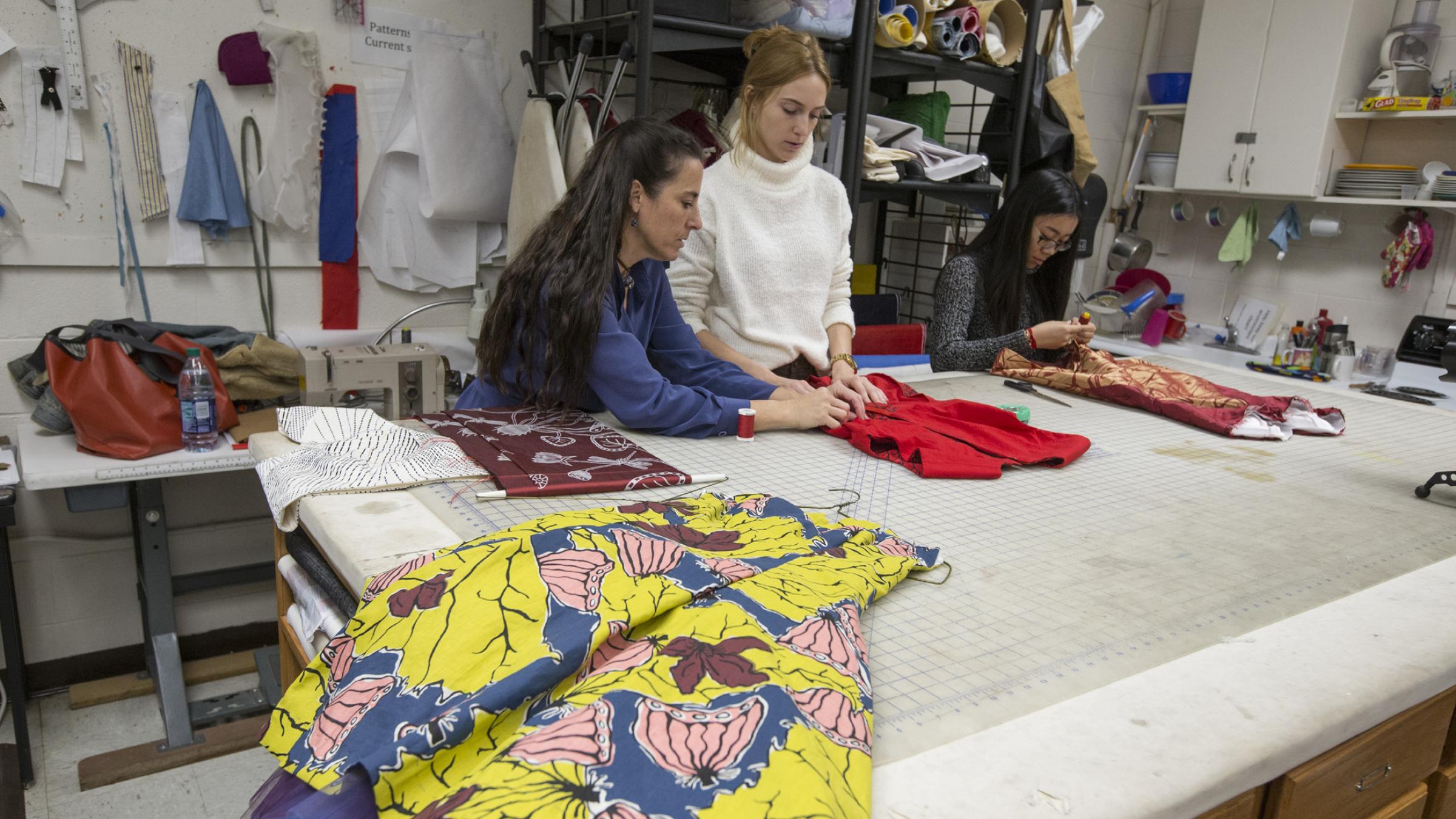
Linton assists fourth-year student Meredith Wadsworth and third-year student Cindy Zhang with their garments. All of the students enrolled in the class had previous sewing experience, but many were learning how to put a garment together for the first time.
“This opportunity reached students who study the arts, but it also reached those outside of the arts major,” Maupin said. “Marcy really focused on craftsmanship, so that students could learn how to make a quality garment.”
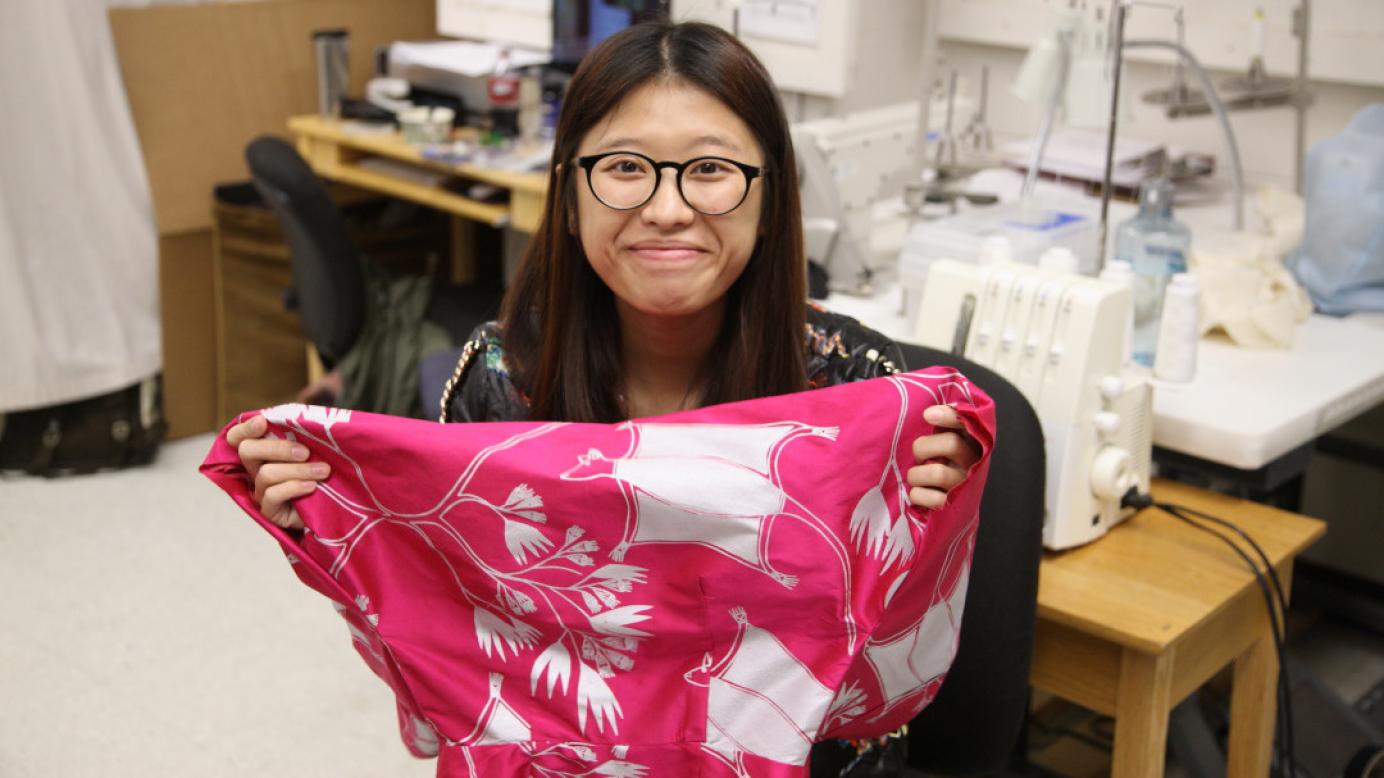
Third-year student Xingyang Li holds fabric by Selina Nadjowh of Injalak Arts and Crafts. Some patterns were used as teaching tools among indigenous peoples. For example, depictions of animals could teach boys to identify, hunt and clean that animal.
“In general, Aboriginal and Torres Strait Islander art is used to instruct young people about the land, history and culture,” Maupin said. “The medium might change and adapt, but the cultural and spiritual significance of the design and the story don’t change.” (Photo by Tom Cogill)
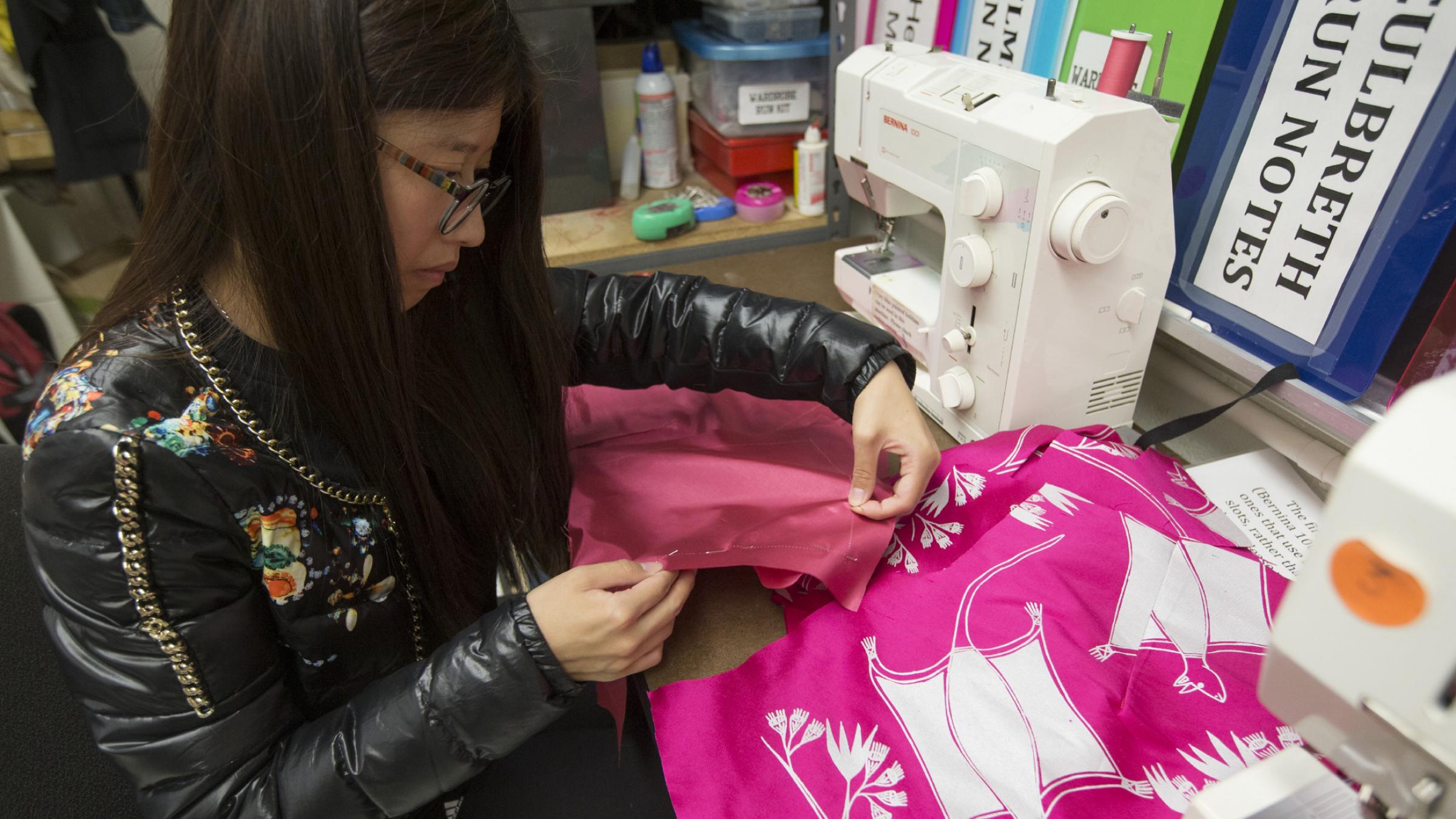
Li at work in the costume shop. To create their garments, students first made a muslin mock-up of their designs, to test the fit and identify any problems. Then, they cut and sewed the fabric and held fitting sessions with their models to make final adjustments.
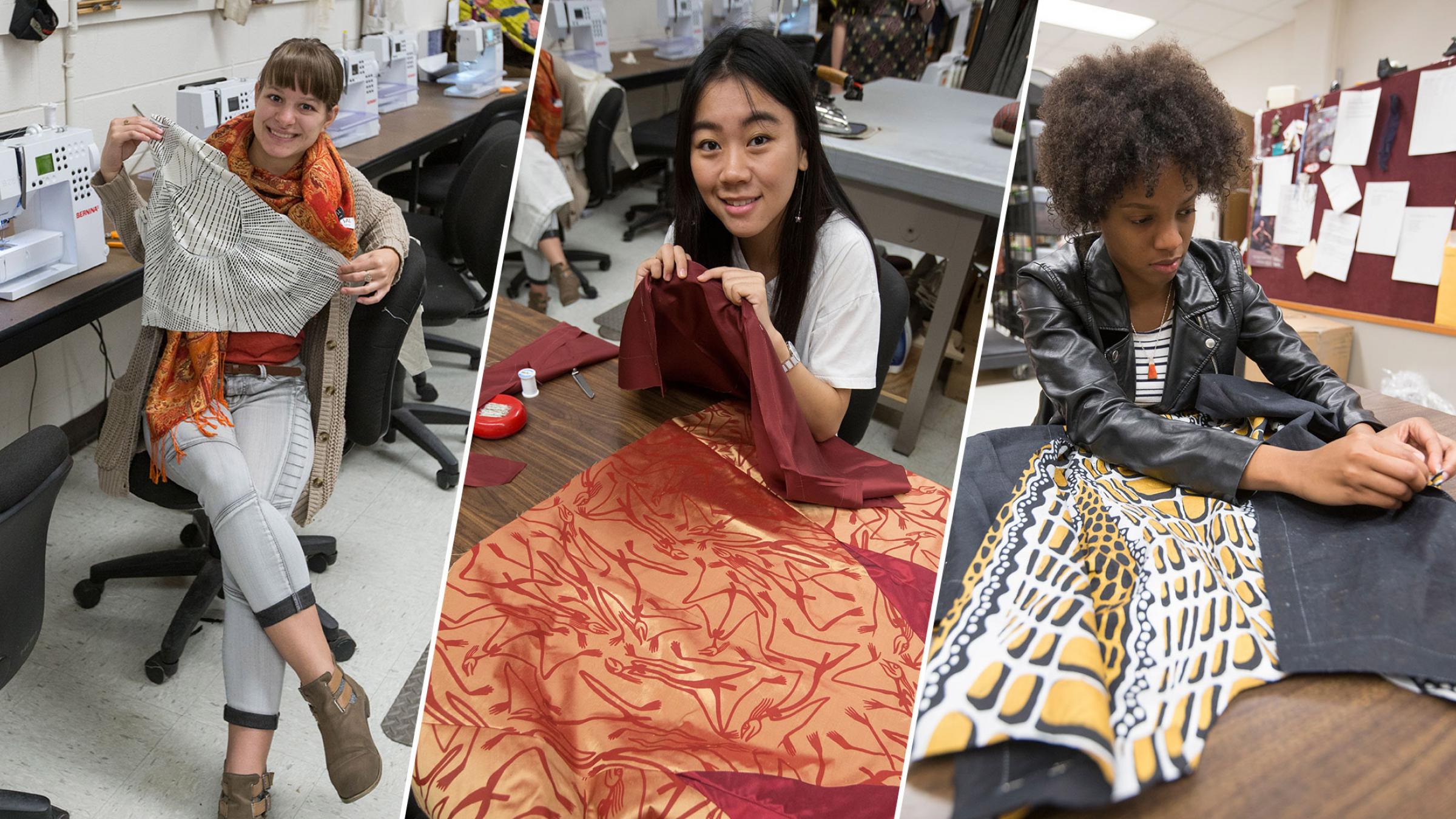
Maupin was impressed by the enthusiasm and dedication of the students including, left to right, fourth-years Olivia Tritschler (with fabric by Susan Marrawar, Babbarra), Dejoie (fabric by McTaggart) and Zhang (fabric by Gabriel Maralngurra, Injalak Arts and Crafts).
“I can tell they really appreciated the opportunity to fabricate a garment using high-end fabric, learn about another culture and receive guidance from the very skilled Marcy Linton,” she said.
Tritschler, left, began volunteering weekly at the Kluge-Ruhe and is now co-manager of the show, alongside Maupin. Another student, first-year Kris Cody, worked throughout the year producing music for the show.
“So many students have been involved in this project, from start to finish, and many have dedicated hours on end,” Maupin said.
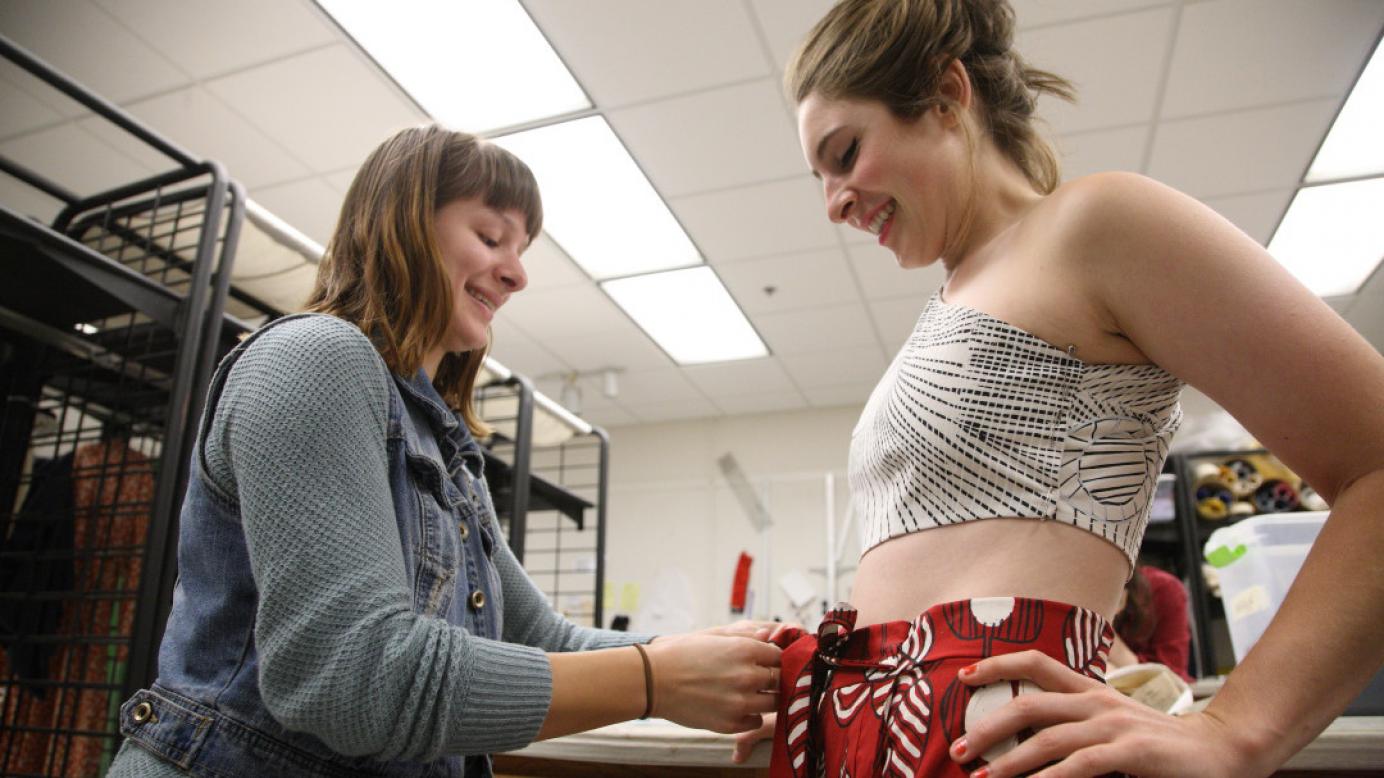
Tritschler, left, with model Annie Temmink. Tritschler video-chatted with the artists who designed both fabrics, Deborah Wurrkidj and Susan Marrawar of the Babbarra Women’s Centre. The red pattern depicts bush apples. The black-and-white represents “dilly bags” – woven baskets for fishing or carrying items.
“It was so interesting to hear their perspective and why they chose those objects,” Tritschler said. “It was an honor to create a garment using fabrics that tell stories of these rural communities and their traditions and heritage.” (Photo by Tom Cogill)
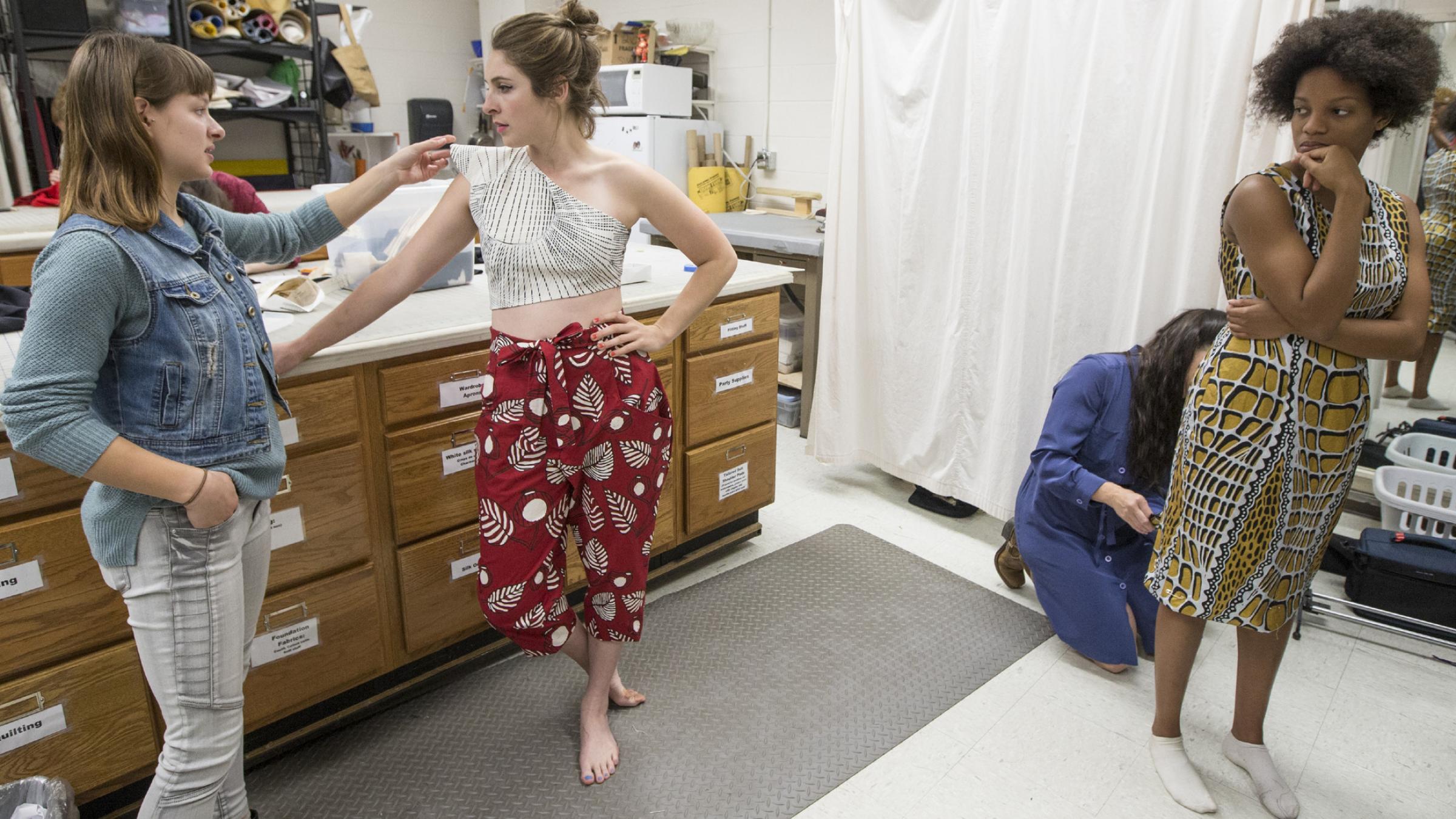
Tritschler debates a change to the shoulder of her garment while Linton helps Dejoie adjust the fit of her dress.
“This project is an opportunity to educate wider audiences on art that is not as well-known,” Tritschler said. “I am really excited to have the opportunity to show Charlottesville a little bit of Australian fashion and art that is not widely seen outside of Australia.”
The show also will feature garments and accessories made by professional indigenous designers and Aboriginal music by the music trio Biliirr. Sponsors include the Kluge-Ruhe, the Embassy of Australia, the UVA Arts Council, the Department of Drama, the UVA Parents Committee and the Office of the Vice Provost for the Arts.
Caroline Newman
Media Relations Assistant
Office of University Communications
Original Publication – UVA Today



